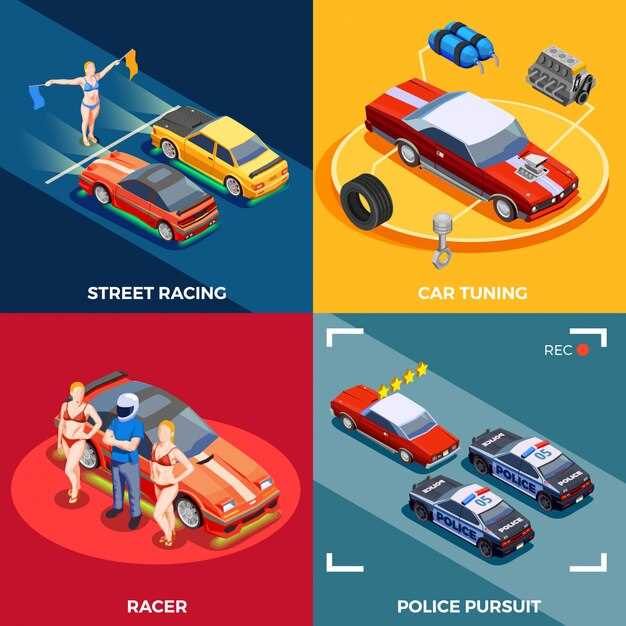
The world of high-performance vehicles often brings to mind the thrilling image of sleek supercars gliding effortlessly down open roads. These automotive marvels are engineered for speed, power, and an exhilarating driving experience, capturing the imagination of car enthusiasts globally. However, a lesser-known contender in this arena is the race-tuned sedan, which combines everyday usability with remarkable athleticism, thanks to meticulous tuning and advanced engineering.
This article delves into the performance differences and similarities between supercars and race-tuned sedans. While supercars are typically designed with an exclusive focus on achieving peak performance metrics, race-tuned sedans offer a unique blend of practicality and racing prowess. Factors such as engine output, handling dynamics, and braking capabilities will be examined to illustrate how tuning can significantly transform a standard vehicle into a formidable competitor on the track.
By breaking down the characteristics that define these two categories of performance vehicles, we will uncover the underlying technologies and innovations that contribute to their respective strengths. From raw acceleration to cornering stability, the comparison aims to provide a comprehensive understanding of what makes supercars and race-tuned sedans distinct, yet surprisingly comparable, in their pursuit of speed and agility.
Acceleration Metrics: How Do Supercars Outpace Tuned Sedans?
Supercars are often regarded as the epitome of performance engineering, showcasing acceleration metrics that can leave even the most expertly tuned sedans in the dust. This distinction primarily stems from several key factors including power-to-weight ratio, aerodynamics, and engine technology.
One of the most significant advantages supercars hold is their power-to-weight ratio. With cutting-edge materials such as carbon fiber and aluminum, these vehicles are designed to be lightweight, allowing for a more responsive acceleration. In contrast, while tuned sedans can enhance their power output through tuning modifications, they often retain more substantial body structures that impede overall acceleration efficiency.
Aerodynamics is another critical aspect influencing acceleration. Supercars typically feature advanced aerodynamic designs that optimize airflow, reducing drag and increasing downforce at high speeds. This allows them to maintain traction and stability during rapid acceleration. Although tuning can improve the aerodynamic properties of sedans, their inherent design limitations may prevent them from achieving the same level of efficiency.
Engine technology also plays a crucial role in performance metrics. Supercars are often equipped with high-performance engines that utilize advanced turbocharging and direct injection systems, enabling them to produce immense horsepower and torque. Tuned sedans can certainly benefit from engine tuning, but they may still fall short when compared to the sophisticated engineering found in supercars.
Finally, drivetrain and transmission systems contribute to the disparity in acceleration. Many supercars feature dual-clutch transmissions that allow for lightning-fast gear shifts, reducing the time taken to reach optimal speed. Tuned sedans may incorporate performance-oriented tuning in their gearbox, but they generally do not match the rapidity and efficiency of supercar transmissions.
In conclusion, while tuning can significantly enhance the performance of sedans, supercars leverage a combination of lightweight design, advanced aerodynamics, superior engine technology, and rapid transmission systems, giving them the edge in acceleration metrics. The art of tuning can elevate a sedan’s performance, yet the inherent advantages of supercars make them unparalleled in the realm of acceleration.
Handling Dynamics: What Makes Supercars Superior on the Track?

Supercars are engineered for peak performance, particularly in handling dynamics, which set them apart from race-tuned sedans. Several key factors contribute to their superior capabilities on the track:
- Weight Distribution: Supercars are often designed with a near-perfect weight distribution, allowing for enhanced stability and control during high-speed cornering.
- Suspension Systems: Advanced suspension systems, such as double wishbone or multi-link configurations, provide improved responsiveness, allowing supercars to efficiently absorb shocks and maintain tire contact with the road.
- Tire Selection: High-performance tires specifically designed for supercars offer superior grip and better traction. The rubber compounds are optimized for track conditions, enhancing cornering performance.
- Lower Center of Gravity: A lower center of gravity in supercars reduces body roll and improves stability, enabling them to corner faster without compromising control.
- Aerodynamic Features: Supercars often incorporate active aerodynamics, including adjustable wings and diffusers, which increase downforce at higher speeds, improving traction and cornering capabilities.
Tuning also plays a crucial role in maximizing handling performance. Manufacturers often fine-tune the characteristics of supercars to suit specific driving conditions:
- Chassis Tuning: Adjustments in the chassis rigidity and geometry can enhance responsiveness and stability.
- Suspension Tuning: Customizable dampers and springs allow drivers to fine-tune their vehicle’s handling dynamics based on track conditions or personal preferences.
- Electronic Stability Controls: Advanced traction and stability control systems are recalibrated to provide the right balance between performance and safety, optimizing handling under diverse conditions.
These engineering innovations and precise tuning methods enable supercars to not only outperform race-tuned sedans on the track but also deliver an exhilarating driving experience that is hard to match.
Cost vs. Performance: Is Tuning a Sedan Worth the Investment?

Tuning a sedan can provide a significant improvement in performance, but whether it’s worth the financial investment largely depends on individual goals and expectations. Many car enthusiasts opt for tuning to enhance elements such as horsepower, torque, and overall driving dynamics. These enhancements can bring a sedan closer to the performance levels of supercars in some aspects, but this transformation doesn’t come without costs.
The initial investment in tuning can vary widely based on the specific modifications desired. Basic tuning might involve an ECU remap, which optimizes engine performance for a few hundred dollars. However, more extensive modifications, such as upgrading the suspension, brakes, or exhaust system, can escalate costs into thousands. It’s crucial for potential tuners to weigh these costs against the expected performance gains.
Another aspect to consider is the long-term value. While a tuned sedan can provide thrilling performance, it may affect reliability, fuel efficiency, and potentially resale value. Manufacturers often design sedans for balanced performance and comfort, and significant tuning may lead to quicker wear on components. This could result in increased maintenance costs that might offset the initial investment in tuning.
Moreover, the performance enhancement achieved through tuning a sedan may not always match that of high-performance supercars. Supercars are engineered with an emphasis on speed, handling, and aerodynamics from the ground up. This foundational advantage can make it challenging for a tuned sedan to compete on equal footing, particularly on racetracks or in extreme conditions where supercars shine.
Ultimately, whether tuning a sedan is worth the investment lies in personal preferences. For spirited drivers who enjoy the process of fine-tuning and seek a unique driving experience, the rewards can be substantial. Alternatively, those looking for raw speed and unyielding performance may find that investing directly in a supercar is a more satisfying choice. Assessing one’s priorities in terms of performance, budget, and commitment to tuning is essential in making the right decision.
